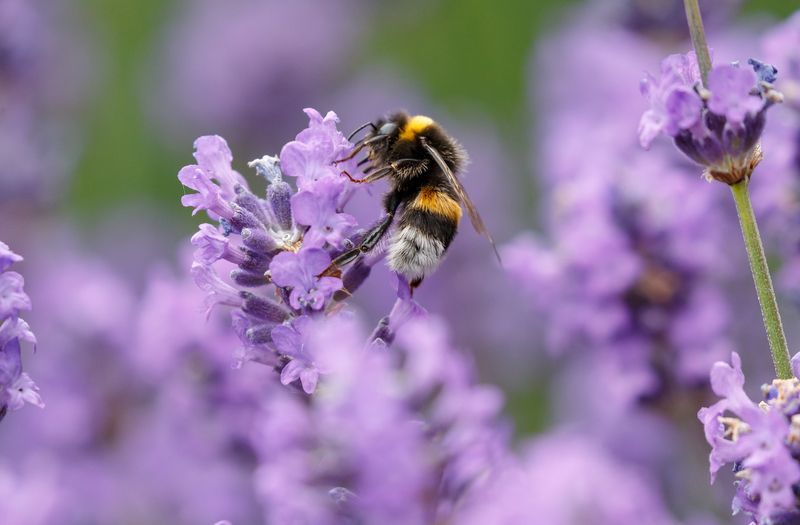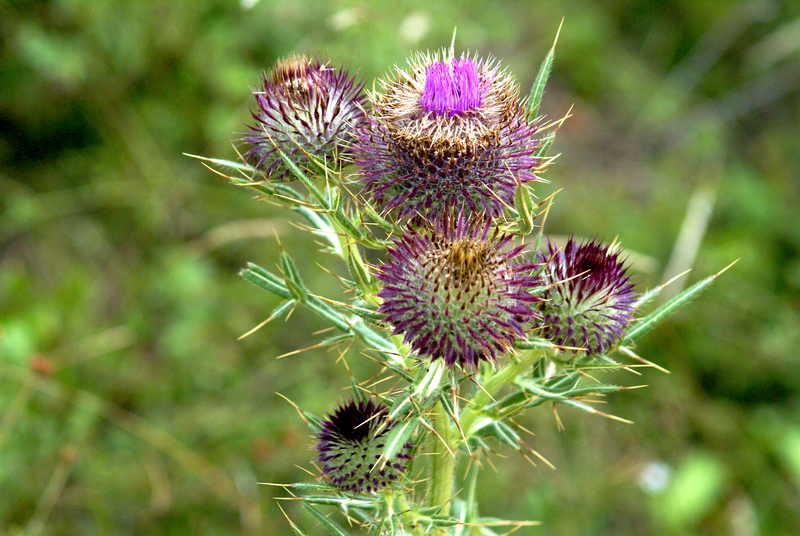From Novice to Expert: Orchid Caring Tips
Posted on 03/09/2025
From Novice to Expert: Orchid Caring Tips
Do you dream of lush, exotic orchids blooming effortlessly in your home? You're not alone! Orchids are among the most popular and mesmerizing houseplants. However, many plant enthusiasts struggle to keep them healthy and vibrant. With the right orchid care tips, anyone can transform from a beginner to a confident orchid grower. In this comprehensive guide, you'll find all you need to know, from the basics of orchid care to advanced techniques for flourishing blooms.
Understanding Orchids: An Introduction
Orchids, belonging to the family Orchidaceae, encompass over 25,000 species and over 100,000 hybrids. Their allure lies in their diverse flower shapes, colors, and remarkable ability to adapt to various climates. Before diving into orchid caring tips, it's essential to understand what makes these enchanting plants unique.
- Epiphytes: Most commonly grown orchids, like Phalaenopsis and Cattleya, are epiphytes--meaning they grow on trees, not in soil.
- Terrestrial Orchids: Some, such as Paphiopedilum, grow in the ground and prefer different care methods.
- Adaptability: Orchids thrive in diverse climates--from rainforests to alpine meadows.
Why is this important? Understanding your orchid's background will allow you to create an environment similar to its natural habitat, setting the foundation for successful care.

Choosing the Right Orchid for Your Home
Not all orchids are created equal. Some are suited for beginners, while others require advanced attention. Here are a few beginner-friendly varieties:
- Phalaenopsis (Moth Orchid): *Ideal for beginners*, blooms last several months, tolerates home conditions well.
- Dendrobium: Hardy and forgiving, with stunning sprays of flowers.
- Cattleya: Known for vibrant colors and exquisite fragrance.
- Paphiopedilum (Slipper Orchid): Prefers lower light and is relatively easy to maintain.
Tip: When choosing an orchid, look for healthy, plump roots and firm green leaves, avoiding plants with signs of pests or disease.
Essential Orchid Care Tips for Beginners
1. Providing Optimal Light Conditions
Orchids need sufficient--but not direct--light to thrive. Too much sunlight can scorch leaves; too little will hinder blooms.
- Phalaenopsis and Paphiopedilum: Prefer low to medium, indirect light. A north or east-facing window is ideal.
- Cattleya and Dendrobium: Require bright, filtered light. They can tolerate some morning sunlight.
Place your orchid near a window with sheer curtains, or use grow lights during winter months. Leaf color is a great indicator: a healthy green suggests perfect lighting, while dark green means too little, and yellow hints at excess.
2. Mastering the Watering Routine
Correct watering is the most crucial skill in orchid care. Orchids are sensitive to overwatering, which can lead to root rot. Remember: it's better to underwater than overwater.
- Check Before You Water: Stick your finger about an inch into the potting medium. Only water if it feels dry.
- Morning Watering: Watering in the morning allows leaves and roots to dry before nightfall, reducing disease risk.
- Use Lukewarm Water: Cold tap water can shock orchid roots.
- Drainage is Key: Always use pots with drainage holes and let water flow freely out.
Pro tip: Avoid using ice cubes; they do not provide adequate moisture and can chill the roots.
3. The Art of Humidity
Orchids love humidity, often preferring levels between 40% and 70%. In typical homes, especially during winter, air can be dry. To ramp up humidity:
- Group orchids together to create a humid microclimate.
- Use a humidity tray--a shallow dish filled with pebbles and water placed beneath the pot, ensuring the roots are never submerged.
- Mist plants occasionally, but be cautious to avoid soggy foliage.
- Consider using a room humidifier for consistent results.
4. Feeding for Flourishing Blooms
Orchids require regular feeding for robust growth and abundant flowers. However, they are sensitive to fertilizer buildup.
- Use Balanced Orchid Fertilizer: Apply a balanced formula (20-20-20) or one specifically for orchids.
- "Weakly, Weekly": Dilute fertilizer to half or quarter strength and use once a week during active growth, cutting back in winter.
- Flush the Pots: Once a month, rinse the pot with plain water to prevent salt buildup.
Remember: Overfertilizing is worse than underfeeding your orchid. Growth will slow, and leaf tips can burn.
Advanced Orchid Caring Tips: Elevating Your Orchid Expertise
5. Repotting Orchids Like a Pro
Although orchids do not like frequent disturbance, repotting every 1-2 years is vital for health. Old medium decomposes, reducing aeration and leading to root rot. Signs your orchid needs repotting include:
- The potting medium decomposes or retains water longer than normal.
- Roots spill over the pot's edge.
- Growth has slowed, or leaves are dropping.
- Choose the Right Time: Repot after blooming has finished, not during flowering or bud formation.
- Prepare New Medium: Use a specialty orchid mix, usually bark-based for epiphytes.
- Remove Old Medium: Gently shake off decomposed material, trim any dead or mushy roots.
- Secure the Orchid: Center in a new pot, fill gaps with fresh medium, and water lightly.
Expert tip: Always use sterilized scissors or pruners to avoid spreading diseases.
6. Dealing with Pests and Orchid Diseases
Even the most experienced growers encounter pests and diseases. Timely identification and treatment are key.
Common Orchid Pests:- Mealybugs: Appear as white, cottony patches--wipe with alcohol-soaked cotton swabs.
- Spider Mites: Tiny, infesting leaf undersides; control with insecticidal soap.
- Scale: Hard, brown bumps--scrape gently and use horticultural oil.
- Root Rot: Caused by overwatering or poor drainage. Cut away affected roots and repot immediately.
- Leaf Spots: Fungal or bacterial. Remove affected leaves and apply a fungicide or bactericide.
Regularly inspect your plants, isolate new orchids for a couple of weeks, and keep tools clean. Prevention is better than cure!
7. Orchid Propagation Methods
Want to expand your orchid collection? With the proper knowledge, propagation can be incredibly rewarding.
- Division: For sympodial types like Cattleya and Dendrobium, divide healthy, mature plants during repotting, ensuring at least three pseudobulbs per section.
- Keiki (Baby Orchids): Some orchids, especially Phalaenopsis, produce small plantlets on flower spikes. Wait until roots are 2-3 inches long before removing and potting.
- Backbulbs: Older pseudobulbs that are leafless but viable can be repotted and encouraged to sprout new growth.
Propagation boosts confidence and deepens your connection with these fascinating plants!
Troubleshooting Common Orchid Problems
Why Won't My Orchid Bloom?
It's a common frustration! Here are possible causes and solutions:
- Insufficient Light: Move to a brighter location.
- Improper Feeding: Increase phosphorus-rich fertilizer (during the blooming season).
- Temperature Fluctuations: Orchids often need a temperature drop at night to trigger blooming.
- Root Issues: Check for healthy, white or green roots.
Leaf Problems and Root Health
- Yellowing Leaves: Occurs naturally with older foliage, but if widespread, adjust watering or lighting.
- Wrinkled or Limp Leaves: Indicates underwatering or root damage.
- Black or Mushy Roots: Prompt repotting and root trimming needed.
Always observe your orchid's daily changes for signs of trouble and respond promptly.
Seasonal Orchid Care: Keeping Plants Thriving All Year
Orchids, like all plants, have seasonal care needs. Here's how to keep them happy year-round:
- Spring-Summer: Increased growth. Fertilize regularly, watch for pests, and ensure good airflow.
- Autumn: Reduce watering and feeding as growth slows. Some orchids initiate flower spikes with cooler nights.
- Winter: Orchids rest. Minimize watering and avoid fertilizing if growth stops. Ensure sufficient light and humidity.
Adjust your care routines with the seasons for year-round success and spectacular blooms.

Orchid Caring Tips: FAQs
-
How often should I water my orchid?
- Typically every 7-10 days, but frequency depends on type, pot size, and home conditions. Let the medium dry out before the next watering.
-
Do all orchids need the same care?
- No. While basic principles apply, species and hybrids have unique requirements for light, humidity, and repotting.
-
How can I get my orchid to rebloom?
- Ensure proper lighting, adjust temperatures, resume feeding after resting, and be patient--some orchids bloom annually.
Conclusion: From Novice to Orchid Expert
Growing orchids isn't difficult--it's about understanding and respecting their needs. By following the orchid caring tips and mastering these proven strategies, you'll enjoy thriving, blooming plants year after year.
- Choose the right orchid for your space and skill level.
- Perfect the basics: light, water, humidity, and feeding.
- Repot, propagate, and troubleshoot with confidence.
- Adapt your care with the seasons and always keep learning.
From novice to expert, the journey is filled with discovery and beauty. Happy orchid growing!

